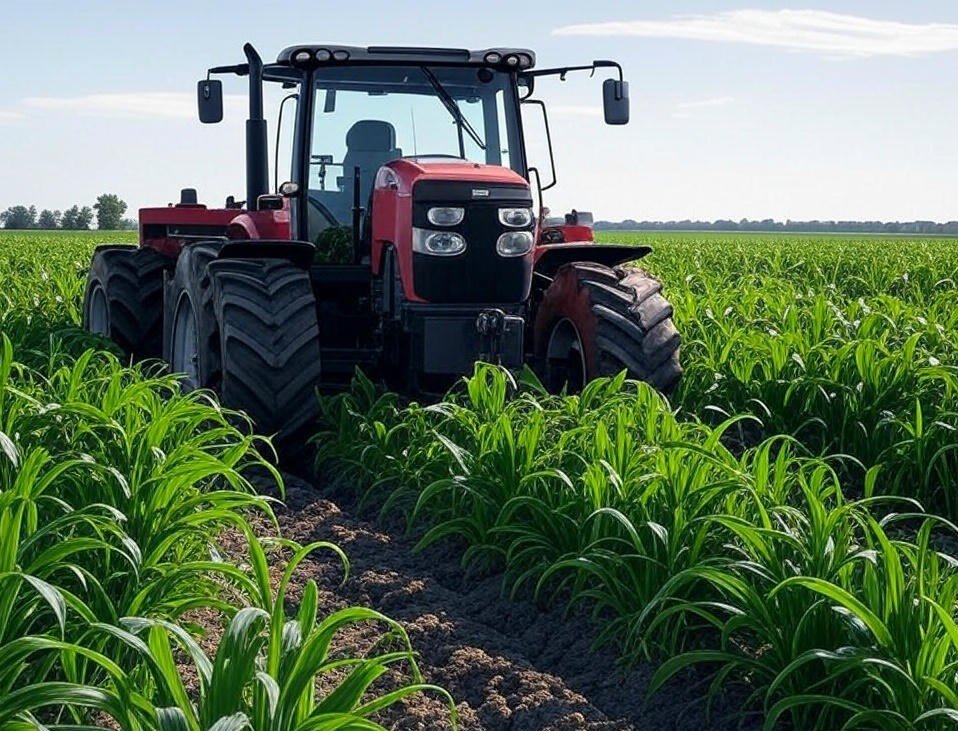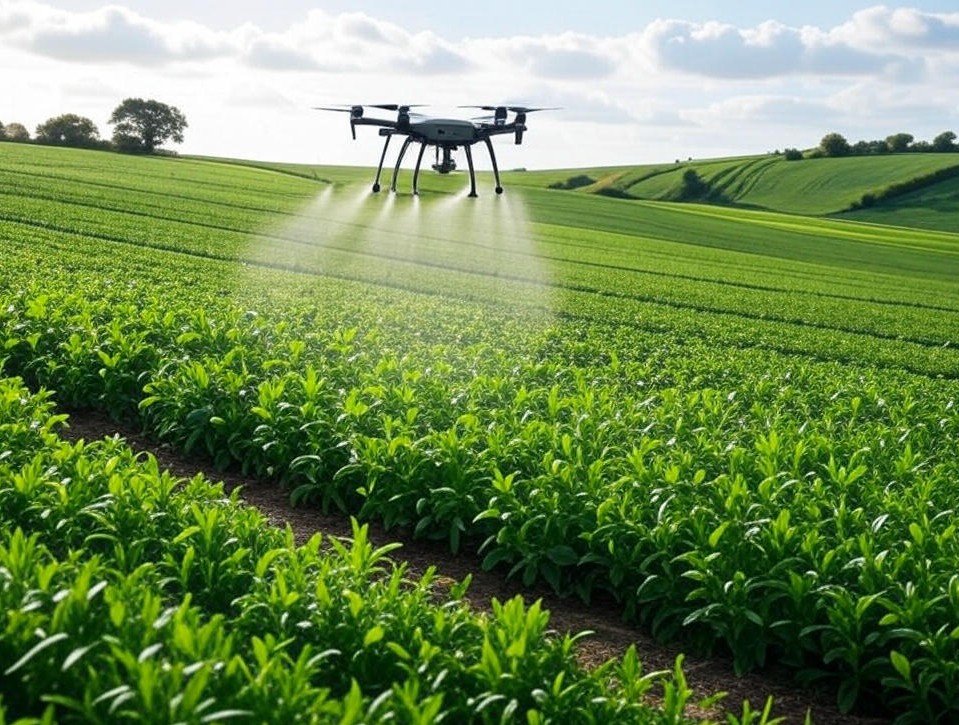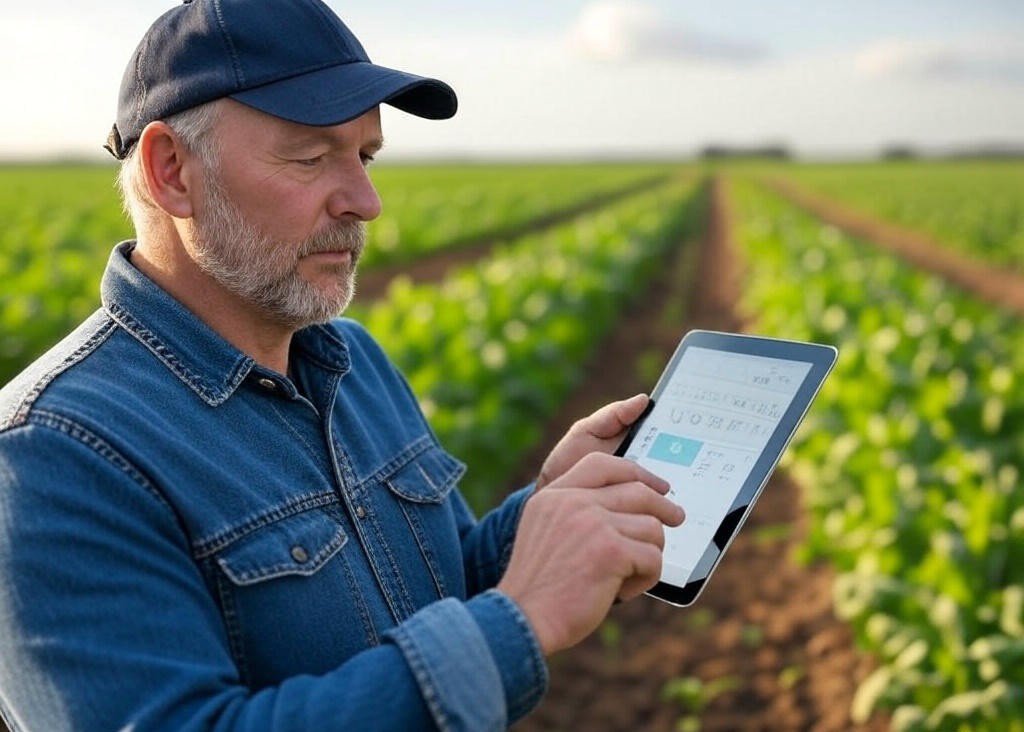
Introduction: A New Era for UK Farming
Picture a UK farm where drones glide over fields, sensors track soil health in real-time, and automated tractors plant crops with precision. This isn’t a futuristic dream—it’s the reality of smart farming UK. For example, this transformative approach uses cutting-edge technologies like AI, IoT, and robotics to boost productivity and promote sustainability. Moreover, with the UK government investing over £270 million in farming innovation programs through 2029, farmers are embracing a tech-driven future. Let’s explore how these innovations are reshaping UK agriculture and driving sustainable farming UK.
What Is Smart Farming?
Smart farming UK integrates advanced technologies into agricultural practices to enhance efficiency and profitability. For instance, IoT sensors monitor soil conditions, while AI predicts crop yields. According to DEFRA, these tools can increase crop yields by up to 20% and cut input costs by 10–15%. Consequently, this shift is critical for an industry contributing £120 billion annually to the UK economy and employing over 400,000 people. In addition, smart farming, often called precision agriculture, empowers farmers to make data-driven decisions for a sustainable future.
Key Smart Farming Technologies in the UK
The UK’s agri-tech sector is thriving, with several technologies leading the charge. Here’s a closer look at the innovations transforming farming:
IoT in Farming: Real-Time Insights
Internet of Things (IoT) devices, such as soil sensors and weather stations, provide real-time data on crop conditions. For example, these tools help farmers optimize irrigation, reducing water usage by up to 30%. This is vital for sustainable farming UK, particularly in water-scarce regions. Furthermore, Agri-TechE notes that over 50% of UK farms now use IoT technology, highlighting its growing adoption.
AI in Agriculture: Smarter Decision-Making
Artificial intelligence (AI) and machine learning (ML) analyze data to predict yields and detect diseases. For instance, Farmonaut’s AI platform has helped UK farmers boost yields by 20%. In addition, AI-driven weed detection reduces herbicide use by up to 40%, supporting sustainable farming UK. As a result, farmers can make smarter, eco-friendly decisions.
Drones and Robotics: Precision from Above and Below
Drones equipped with sensors monitor crops from the sky, identifying issues like pests or nutrient deficiencies. Meanwhile, robotics, including automated tractors, address labor shortages—a pressing issue in the UK, where 70,000 seasonal workers are needed yearly. For example, Harper Adams University’s Hands-Free Farm showcases how autonomous tractors streamline planting and harvesting.
Vertical Farming: Growing Up, Not Out
Vertical farming uses stacked layers and controlled environments to grow crops indoors. By leveraging hydroponics and IoT sensors, it uses 95% less water than traditional methods. Consequently, UK startups like Jones Food Company are supplying supermarkets with fresh, local produce year-round, advancing sustainable farming UK.

Case Studies: UK Farms Embracing Smart Farming
Several UK farms and projects illustrate the impact of smart farming UK. Here are two notable examples:
Harper Adams University’s Hands-Free Farm
Located in Shropshire, Harper Adams University’s Hands-Free Farm spans 35 hectares and uses autonomous tractors and drones. For example, in its first year, the project increased crop efficiency by 15%. Supported by the UK’s Farming Innovation Programme, this initiative demonstrates how robotics can tackle labor shortages. Moreover, it serves as a blueprint for precision agriculture.
Small Robot Company: Precision Planting
The Small Robot Company’s robots, like “Tom” and “Dick,” perform tasks such as planting and weeding. By targeting specific areas, these robots cut herbicide use by up to 90%. As a result, farmers save £50 per hectare, showcasing the economic benefits of agri-tech innovations. Furthermore, this approach aligns with sustainable farming UK goals.
Benefits of Smart Farming in the UK
Smart farming UK delivers significant advantages for farmers, the environment, and consumers:
- Increased Yields: For instance, AI and IoT boost crop yields by 10–20%, per OECD data, helping meet rising food demands.
- Sustainability: Precision agriculture reduces water and pesticide use, aligning with DEFRA’s goal to cut agriculture’s carbon footprint by 30% by 2030.
- Cost Reduction: Automation lowers labor and input costs, with farms saving up to 15% on expenses.
- Addressing Labor Shortages: With Brexit reducing seasonal worker availability, robotics ensures timely operations.
- Improved Food Quality: Consequently, smart farming enhances crop consistency, meeting consumer demand for sustainable produce.

Challenges Facing Smart Farming UK
Despite its benefits, smart farming faces challenges that require attention:
- High Initial Costs: IoT systems and robotics demand significant investment. For example, small-scale farmers, who account for 60% of UK farms, often struggle to afford these tools. However, government grants are helping bridge this gap.
- Rural Connectivity: Many rural areas lack reliable internet, limiting IoT and AI effectiveness. For instance, only 65% of rural farms have high-speed broadband, compared to 95% in urban areas.
- Farmer Adaptation: Transitioning to smart farming requires training. Moreover, only 30% of UK farmers over 55 use digital tools regularly, per Agri-TechE, highlighting resistance to change.
Future Trends in Smart Farming UK
Looking ahead, several trends are set to accelerate smart farming UK:
5G Connectivity
The rollout of 5G in rural areas will enhance IoT in farming by enabling faster data transfer. For example, by 2027, 80% of UK farms are expected to have 5G access, supporting real-time monitoring and autonomous machinery.
Blockchain for Supply Chains
Blockchain improves transparency in food supply chains. For instance, UK startups like Provenance use blockchain to track produce, increasing consumer trust by 20%. As a result, this technology could become a standard in agri-tech innovations.
Policy Support and Funding
The UK’s Farming Innovation Programme, with £270 million allocated through 2029, drives agri-tech adoption. In addition, DEFRA’s grants have funded over 1,200 projects since 2020, supporting small farmers and startups.
UK Agri-Tech Startups
The UK’s agri-tech ecosystem is flourishing. For example, Hummingbird Technologies uses AI to analyze satellite imagery, while Agreena rewards sustainable practices with carbon credits. Consequently, UK agri-tech funding reached £1.2 billion in 2024.
How to Get Involved in Smart Farming UK
Whether you’re a farmer or a tech enthusiast, you can join the smart farming UK revolution:
- Explore Agri-Tech Startups: For instance, check out Small Robot Company or Farmonaut to see how their tools can benefit your farm.
- Apply for Government Grants: Visit gov.uk to learn about Farming Innovation Programme grants.
- Join Agri-TechE: This network connects farmers and innovators. Learn more at agri-teche.org.
- Attend Workshops: For example, Harper Adams University offers training to help farmers adopt smart farming technologies.
Conclusion: A Sustainable Future for UK Agriculture
In summary, smart farming UK is revolutionizing agriculture by making it more productive and sustainable. For instance, technologies like IoT, AI, and robotics empower farmers to overcome challenges like labor shortages and environmental concerns. However, hurdles such as costs and connectivity persist. Nevertheless, with trends like 5G and blockchain, plus government support, the future looks promising. Therefore, now is the time to explore smart farming UK—whether by applying for grants or connecting with startups. Take the first step today to help shape the future of sustainable farming UK.
Helpful Links & References
Check out our previous blog post, “No-Till Farming: Benefits and Challenges“, to explore more about the science behind no-till farming, its benefits, challenges, and real-world implementation.
Pingback: Best Drought-Resistant Crops for Southern USA - Agro Reality